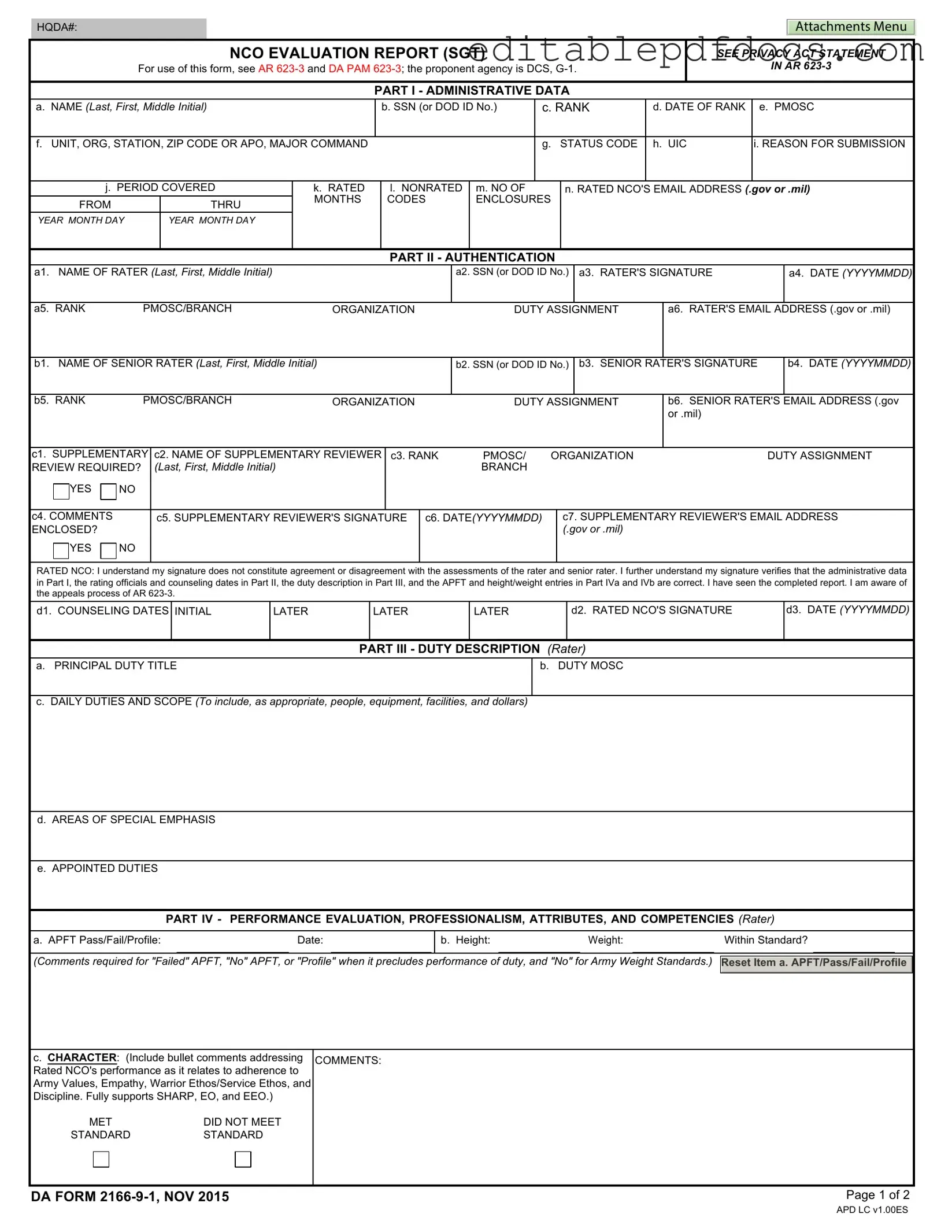The DA 2166-9-1 form serves as a critical tool for evaluating the performance of Non-Commissioned Officers (NCOs) in the U.S. Army, specifically for the rank of Sergeant. This evaluation report, governed by Army Regulation 623-3, encompasses various essential components that capture the NCO's administrative data, performance metrics, and overall potential. The form requires detailed information about the rated NCO, including their name, Social Security Number, rank, and unit details, ensuring a comprehensive overview of their service context. Additionally, it includes sections for the rater and senior rater to provide their assessments, along with their signatures, thereby validating the evaluation process. The form not only highlights the NCO’s daily duties and areas of special emphasis but also evaluates key attributes such as character, presence, intellect, leadership, development, and achievement. This thorough approach aims to foster a culture of accountability and growth within the Army, ultimately contributing to the professional development of its enlisted personnel. Furthermore, the DA 2166-9-1 emphasizes the importance of feedback and counseling, encouraging NCOs to engage actively in their performance assessments and understand the appeals process outlined in Army regulations.
